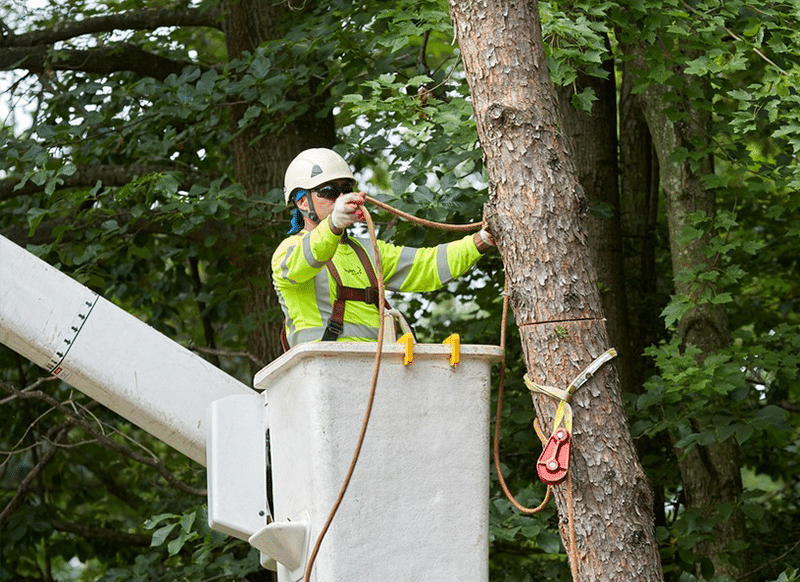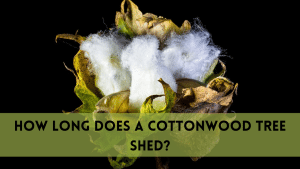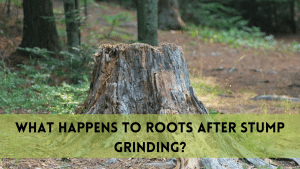Trees may give your property a lot of beauty. They give shade throughout the hot summer months and then put on amazing fall color displays, turning from bright, gorgeous greens to exotic reds and oranges. People might become emotionally attached to their trees and discover that they bring them delight. When a severe storm strikes, this can aggravate people.
Property owners and land managers may face a difficult issue if trees are uprooted. An uprooted tree, whether caused by natural disasters such as storms or other unforeseen situations, affects the landscape and necessitates a critical decision: Should it be replanted or removed?
This decision has far-reaching consequences for both the environment and your property. In this tutorial, we will look at the elements that impact the decision between replanting and removal, allowing you to make an informed decision that is consistent with your goals, the condition of the tree, and the well-being of your surroundings
How Does a Tree Get Uprooted?
Trees can get uprooted through various natural and human-induced factors. Here are some common reasons why trees become uprooted:
High winds, hurricanes, tornadoes, and severe storms
- Soil erosion caused by heavy rainfall or flooding
- Decayed or weakened roots
- Construction activities near a tree, such as digging, grading, or trenching,
- Tree diseases and pests can damage a tree’s root system
- Improper pruning
- Poor structure
- Drainage problems
- moisture
Is It Possible to Replant an Uprooted Tree?
Assessing the situation
- It depends on the tree’s health. If the tree is in poor condition, diseased, or severely damaged, it may be best to remove it. If a really big tree gets uprooted, it probably won’t be able to be saved.
- Smaller trees are easier to replant than larger ones. This is because they do not have massive root structures; hence, most of them remain intact. The larger the tree, the more challenging and expensive it becomes to successfully replant it.
- huge, heavy trees; they require broad roots to acquire water and mineral salts from the soil, as well as anchorage.
- This is due to the fact that it may lose the majority of its moisture as well as induce illnesses. The weight of the tree may be the biggest issue in bringing it back up.
- Consider whether the tree’s size is suitable for your property and if it poses any safety risks.
- Consider the location of the uprooted tree. Replanting may not be practical or safe if it is too close to structures, electrical wires, or other trees.
What To Do With Uprooted Trees?
Assess the Situation: First, evaluate the size and condition of the uprooted tree. Determine if it can be salvaged or if it poses a safety hazard.
Safety First: Ensure that the area around the uprooted tree is safe. Keep people and pets away to prevent accidents.
Contact Professionals: If the tree is large or in a precarious position, it’s best to contact a professional arborist or tree removal service. They have the expertise and equipment to handle the situation safely.
Evaluate Salvageability: If the tree is small and not severely damaged, you may be able to salvage it. Carefully inspect the root system and trunk for damage. Trim any broken or damaged branches.
Replanting: If the tree is salvageable, prepare a new hole in a well-drained area with suitable soil. Replant the tree as soon as possible, making sure it’s at the same depth as it was before. Water it thoroughly and consider staking it to provide support until it reestablishes its roots.
Pruning: Prune the tree to remove any damaged or dead branches. This will help it recover more quickly.
Mulching: Apply a layer of mulch around the base of the tree to conserve moisture and protect the roots. Be sure not to pile mulch against the trunk.
Monitor: Keep a close eye on the tree’s progress. Water it regularly, especially during dry spells, and watch for signs of stress or disease.
Dispose of Debris: If the tree cannot be salvaged, or if it poses a safety risk, you will need to dispose of the debris properly. Contact your local municipal waste management or recycling center for guidance on how to dispose of tree debris.
Consider Recycling: Some communities have recycling programs for tree debris. Wood chips and mulch can often be reused for landscaping or composting.
Firewood: If the wood is suitable for firewood, consider cutting it into manageable pieces and storing it for future use.
Reuse: Get creative with the wood. You can repurpose it for various DIY projects, such as creating garden borders, outdoor furniture, or even art installations.
Composting: Small branches and leaves can be chipped into mulch or added to your compost pile if you have one.
Learn from the Experience: If the tree was uprooted due to extreme weather conditions, consider taking preventive measures in the future, such as regular tree maintenance, pruning, or bracing for stability.
How Do I Replant an Uprooted Tree?
Lift the tree to its original location while avoiding any twists and turns to transplant it. As you move the tree, cover the roots with plenty of soil to ensure that the earth is all over the lateral roots to provide stability. To remove air pockets from the soil, add plenty of water.
Add stakes slightly outside the root region to keep the tree from falling over again. After you’ve finished planting it, cut any damaged branches off. Make sure there are some remaining after you delete them all. Water the tree on a regular basis.
Some people fertilize the tree, but this should not be done while it is still recuperating. Allow it to grow roots.
How Long Can Uprooted Trees Survive?
The lifespan of an uprooted tree depends on several factors, including the tree’s species, size, health, the extent of root damage,
Some tree species are more hardy than others and can withstand the stress of uprooting better. When compared to larger, more established trees, mallee trees have a better chance of survival when uprooted. Larger trees’ broad root systems are more sensitive to harm during uprooting. The extent of root damage during uprooting is critical. The tree has a better chance of surviving if a major section of the roots remains undamaged. Watering, mulching, and monitoring for signs of stress or illness after transplanting can all have a significant impact on the tree’s survival and recovery.
Uprooted Tree Removal Costs
The average cost of removing a tree is $871. The majority of costs vary from $225 to $3,900. The cost is determined by the diameter of the tree’s trunk and the necessity for heavy equipment. Many factors are taken into account while estimating the cost.
The person removing it must see the tree, any obstacles they may find, and how long it will take. You should not always prioritize price before safety.
FAQs
Can a partially uprooted tree can be replanted
Under certain conditions, replanting a partially uprooted tree is a possible alternative. The key to success is determining the level of root damage, the general health of the tree, and intervening quickly.
If your tree has 50% or more of its root system intact and it’s less than 10 feet tall, it may be possible to save it.
How to replant the partially uprooted tree
Carefully pull the tree upright, cover any exposed roots with soil, water it, and stake it for extra support. Unfortunately, trees taller than 10 feet are more difficult to save, whether they are uprooted partially or completely.
Can we replant the fallen tree?
Replanting a fallen tree is possible, but much more challenging. The size of the fallen tree is significant. When transplanted, smaller trees have a better chance of survival, whereas larger trees are extremely difficult to recover. Unlike replacing a partially uprooted tree, When a tree falls, the roots are frequently severely damaged. This damage can be extensive, making it difficult for the tree to recover.
The longer a fallen tree lies on the ground, the less likely it is to survive. It is critical to manage a fallen tree with care while replanting it to avoid further damage. Make a hole large enough to accommodate the root system and plant the tree at the proper depth.
Conclusion
The decision of whether to transplant or remove uprooted trees is complex and influenced by a variety of criteria, such as the tree’s type, size, health, and the unique conditions of your land. It’s a decision with huge ramifications for your landscape and the environment.
Replanting can be a satisfying undertaking, allowing you to save a treasured tree or contribute to the health of the ecosystem. To increase the odds of success, however, careful assessment, skilled handling, and continued care are required. When it comes to replanting, smaller, healthier trees have a greater chance.





